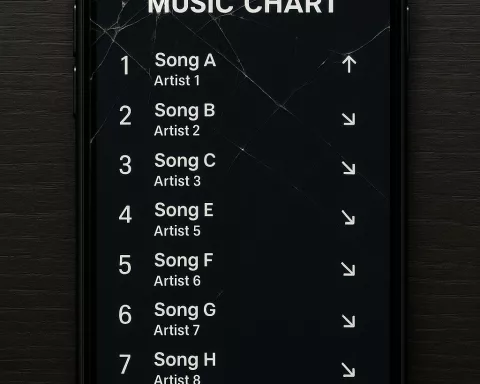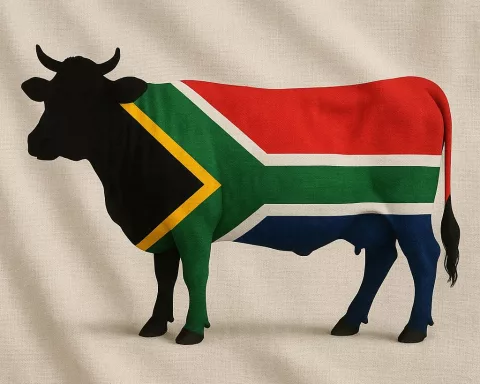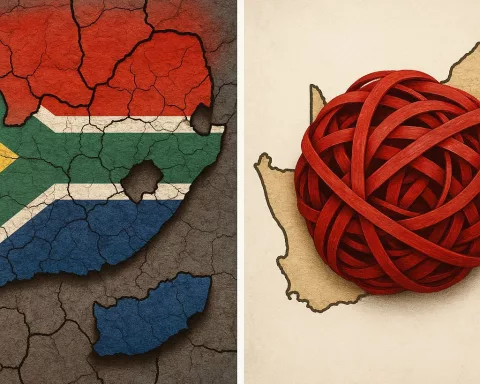The Department of Communications and Digital Technologies (DCDT) has warned against a fake message about a free data giveaway, which is completely untrue. The South African government has launched various initiatives to promote digital equality, such as the South Africa Connect Phase 2 program and the Broadcast Digital Migration process. Access to the internet and digital literacy are essential tools for individuals to participate in the digital economy and create a more equitable society. Investing in these initiatives will prepare the country for future growth and success.
Is there a free data giveaway from the Department of Communications and Digital Technologies (DCDT)?
No, the message about the free data giveaway is entirely false and misleading to the public. The DCDT has released a warning, urging people not to engage in disseminating the bogus information and to exercise caution against opening such links, which may be fake and dangerous. The South African government has launched various initiatives to bridge the digital divide, allowing everyone to participate in the digital economy.
Debunking False Information on Free Data Giveaway
In today’s digital era, the spread of false information and fake news has regrettably become a common occurrence. A recent message has been circulating, alleging a free data giveaway from the Department of Communications and Digital Technologies (DCDT). It is crucial to address these deceptive claims and bring attention to the authentic efforts of the South African government in promoting digital equality.
It is vital to stress that the message about the free data giveaway is entirely false and misleading to the public. The DCDT has released a warning, urging people not to engage in disseminating the bogus information, and to exercise caution against opening such links, which may be fake and dangerous. For any inquiries on this issue, the department’s media relations officer, Tlangelani Manganyi, is available for contact.
Genuine Government Efforts in Fostering Digital Equality
Despite the fake news, it is essential to focus on the real endeavors of the South African government to establish digital balance within society. The government has launched various initiatives to bridge the digital divide, allowing everyone to participate in the digital economy.
One of these initiatives is the South Africa Connect Phase 2 program, led by the DCDT. This program’s primary goal is to expedite internet penetration in public institutions and the community at large. By enabling wider access to the internet, the government seeks to empower citizens and cultivate a digitally inclusive society.
Another indication of the government’s dedication to transitioning toward a digital economy is the two-step approach to completing Broadcast Digital Migration. This process entails the deployment of High Demand Frequency Spectrum, resulting in reduced data costs. By easing the financial strain on citizens, internet access becomes more readily available to a broader range of individuals, consequently narrowing the digital divide.
The Importance of Digital Accessibility and Inclusivity
Navigating the digital landscape, it is imperative to recognize and appreciate the historical and artistic developments that have shaped our current perception of the digital world. The digital revolution has introduced numerous opportunities and challenges in equal measure. While we must tackle the increase of fake news, we should also embrace the authentic efforts being made to enhance digital accessibility and inclusivity.
Although the terminology surrounding digital advancements may seem complex and academic, it is essential for the general audience to understand these developments’ core meaning. The South African government’s initiatives are proof that progress is being made toward a more digitally inclusive society.
To fully grasp the context of these digital initiatives, it is necessary to consider the wider implications of providing internet access to a larger audience. In today’s increasingly interconnected world, digital literacy and accessibility have become critical tools in navigating the intricacies of modern life. By ensuring that individuals from various backgrounds can participate in the digital economy, the government is fostering a more equitable society, where opportunities are not restricted by one’s access to technology.
Analyzing the Impact of Government Initiatives
Examining the South African government’s efforts, it is crucial to think about the potential consequences of their initiatives. By lowering data costs and promoting extensive internet accessibility, the government is effectively investing in the country’s future. A digitally inclusive society is better prepared to flourish in the global economy, as citizens can stay informed, access opportunities, and contribute to the nation’s growth more efficiently.
In summary, while it is essential to debunk the fake news concerning the alleged “free data giveaway,” we must not overlook the authentic efforts being made to bridge the digital divide. As we acknowledge the government’s initiatives, we must also remain vigilant against the spread of false information and understand the significance of fostering digital inclusivity in our contemporary world.
1. Is there a free data giveaway from the Department of Communications and Digital Technologies (DCDT)?
No, the message about the free data giveaway is entirely false and misleading to the public.
2. What has the DCDT done in response to the false message about the free data giveaway?
The DCDT has released a warning, urging people not to engage in disseminating the bogus information and to exercise caution against opening such links, which may be fake and dangerous.
3. What initiatives has the South African government launched to promote digital equality?
The South African government has launched various initiatives to promote digital equality, such as the South Africa Connect Phase 2 program and the Broadcast Digital Migration process.
4. What is the primary goal of the South Africa Connect Phase 2 program?
The primary goal of the South Africa Connect Phase 2 program is to expedite internet penetration in public institutions and the community at large.
5. What is Broadcast Digital Migration, and what does it entail?
Broadcast Digital Migration is a two-step approach to completing the deployment of High Demand Frequency Spectrum, resulting in reduced data costs.
6. Why is digital accessibility and inclusivity important?
Digital accessibility and inclusivity are critical tools in navigating the intricacies of modern life and fostering a more equitable society.
7. What are the potential consequences of the South African government’s initiatives to bridge the digital divide?
Lowering data costs and promoting extensive internet accessibility effectively invests in the country’s future, creating a digitally inclusive society better prepared to flourish in the global economy.
8. What should we do regarding the spread of false information and the efforts to promote digital inclusivity?
We must debunk false information while acknowledging the government’s authentic efforts to bridge the digital divide, remaining vigilant against the spread of false information and understanding the significance of fostering digital inclusivity in our contemporary world.








